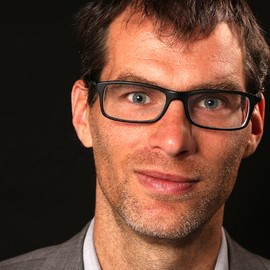Opinie | Politiek en media voeden zorgen over sociale scheidslijnen

Je kunt geen krant openslaan en de tv aanzetten, of er zijn wel mensen aan het bekvechten. Dat zijn vaak opiniemakers en politici, of ontkenners van het een of ander. Mensen met een uitgesproken of soms extreme mening worden tegenover elkaar gezet. De indruk ontstaat dat de polarisatie steeds meer toeneemt, net als ongelijkheid en segregatie. Maar is dat wel zo? Uit onderzoek komt een opmerkelijk beeld naar voren, zegt bijzonder hoogleraar Sociologie aan de RUG, Jochem Tolsma. Hij doet al jaren onderzoek naar deze verschijnselen. Tolsma: ‘Wat we eigenlijk keer op keer zien in onderzoeken is dat de sociale scheidslijnen niet toenemen. Dat lijkt verrassend omdat we in de media niet anders horen dan dat er steeds meer groepen tegenover elkaar komen te staan.’
Tolsma houdt 13 oktober zijn oratie over dit onderwerp in het Academiegebouw van de RUG.
Opgetekend door Jaap Ploeger, Corporate Communicatie RUG
Sociale scheidslijnen
Tolsma heeft drie indicatoren voor sociale scheidslijnen. ‘Wanneer de ongelijkheid, segregatie en polarisatie tussen dezelfde bevolkingsgroepen toeneemt, kun je spreken van toenemende sociale scheidslijnen. Nu is het zo dat inderdaad de kansenongelijkheid en de kloof tussen arm en rijk is gegroeid sinds de jaren ‘80. Daar is geen twijfel over. En ja, er is sprake van segregatie, vooral in geografische zin. Nederland kent achterstandswijken en goudkusten en steden met relatief veel en weinig migranten. We zien echter dat deze scheiding van werelden niet toeneemt. We zijn weliswaar omringd door vrienden en kennissen die op ons lijken, maar tegenwoordig niet meer dan vroeger en nog steeds komen veel mensen in aanraking met verschillende denkbeelden of anders opgeleiden. We denken bovendien dat de polarisatie verergert, terwijl telkens weer uit representatieve steekproeven blijkt dat de overgrote meerderheid vrij genuanceerd denkt over allerlei onderwerpen. We lijken dus een valse perceptie te hebben van de ontwikkeling van sociale scheidslijnen. Ze nemen niet toe.’
Politiek en media voeden het negatieve beeld
‘Deze valse percepties van sociale scheidslijnen worden onder andere gevoed door de media. Je ziet dat mensen met een afwijkende en extreme mening veel vaker een podium krijgen bij bijvoorbeeld praatprogramma’s. Daarin zijn de media wat doorgeschoten. Ook door de opkomst van online forums en social media hebben groepen die in omvang beperkt zijn een relatief groot platform gekregen om hun ideeën uit te dragen. Daarnaast zie je dat er in de politiek ook steeds vaker extreme standpunten worden ingenomen. De media op hun beurt berichten daar weer over, omdat een uitgesproken politicus simpelweg meer aandacht trekt. Dit alles zorgt ervoor dat de perceptie van polarisatie en sociale scheidslijnen negatiever zijn dan de werkelijkheid.’
Framing
‘Minister van Justitie Yesilgöz zei laatst dat de woke-beweging een gevaar is voor de democratie. Maar weet je hoe klein die groep wokisten is? Dat is puur framing. Er zijn wel grotere problemen voor de democratie. En Extinction Rebellion die één tunnel vreedzaam bezet, wordt tegenover de Farmers Defence Force geplaatst. Terwijl deze laatste groep het hele land heeft ontwricht met hun trekkers. Die framing zorgt ervoor dat het lijkt alsof de polarisatie toeneemt. Wanneer we mensen vragen, blijkt dat een meerderheid zowel begrip heeft voor de boeren als de klimaatactivisten, en dat voor beide kanten iets te zeggen is. Wat we weleens de stille meerderheid noemen staat eigenlijk nog steeds in het midden van het politieke spectrum qua opvattingen, en daar is die zogenaamde toenemende polarisatie helemaal niet aan de orde.’
Niet aanwakkeren
Wat moeten we nu met deze kennis? ‘Zelfs in de turbulente recente geschiedenis, de coronajaren, zijn de sociale scheidslijnen niet blijvend en meetbaar toegenomen. Eerlijkheid gebiedt te zeggen: ze zijn dus ook niet afgenomen. Sociale scheidslijnen vergroten het risico op geweldsconflicten. Beleid om sociale scheidslijnen terug te dringen is daarom wel aan te bevelen. Maar het zou dan wel fijn zijn als politiek en media niet onbedoeld bijdragen aan polarisatie en angst over scheidslijnen aanwakkeren.’
Meer nieuws
-
08 december 2025
Burgerparticipatie onmisbaar voor een duurzame energietoekomst
-
23 oktober 2025
Negen wetenschappers van de RUG ontvangen Vidi-beurs
